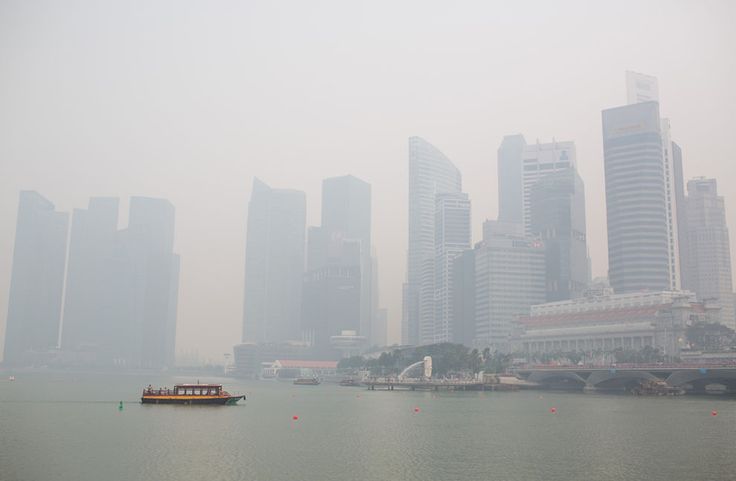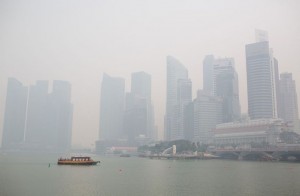Some economists believe that this year’s haze episode will be twice as costly as the one in 1997.
How much would you pay for clean air in Singapore so a Indonesia-based research centre estimated that the haze will cost the region US$14 billion (S$19.7 billion) due to losses linked to agriculture production, forest degradation, health, transportation and tourism, up from the US$9 billion in 1997, said The Wall Street Journal.
But such estimates capture only costs easily identified from economic data.
Other costs, especially those experienced by the man in the street, are harder to put a finger on.
Two researchers from the National University of Singapore (NUS) hope to put a figure to this through a survey to find out if people are willing to pay for clean air. And if so, how much.
“This survey will supplement macro estimates made by the economists, as it quantifies the cost of the haze to people who ‘fall through the cracks’ in official estimates,” said Assistant Professor Ryan Chisholm from the NUS department of biological sciences, the principal investigator behind the project.
Aside from individuals, the study will take into account the losses suffered by small businesses. For instance, the incomes of freelance photographers would have been affected by the haze, Prof Chisholm, 38, said.
He is working with fourth-year environmental studies student Lin Yuan, 24, on the survey, which aims to get 1,000 responses by next month.
A key question in the survey is whether respondents are willing to pay a “haze tax” – by channelling 0.1 to 2 per cent of their annual income to a haze mitigation fund – if air quality remained good all year round.
Ms Lin said: “Although the oil palm, pulp and paper plantations may generate economic growth for the country, it may come at a cost.
“The macro estimates, together with the results from such a survey, could give the authorities a better picture.”
Professor Euston Quah, who heads Nanyang Technological University’s department of economics, said to look at the economic impact of haze would be to consider factors like productivity loss, losses to businesses, tourism, and outdoor recreation and impact on health, including psychological impacts such as depression.
But there are some factors, such as the long-term impact on health, that are difficult to quantify.
He told The Straits Times: “In the case of outdoor recreation and leisure, while one could estimate the loss in revenue receipts from declines in users, there are some other losses such as jogging and strolling, and simple leisure pursuits including sitting on the bench in parks.”
Prof Chisholm believes his study would plug this gap.
He was inspired to do the study when he could not finish a walk at the Southern Ridges with his parents visiting from Melbourne due to the haze in September.
He said: “There have been informal discussions about whether people would be willing to pay for clean air, but this survey would be the first in Singapore to officially test this hypothesis.”
Mr Tan Yi Han, president of volunteer group PM.Haze (People’s Movement to Stop Haze), said the study was interesting as it could potentially help the Singapore Government gauge how much it should spend to help tackle the haze.
“If the results of the survey show that Singaporeans are willing to pay to tackle the haze issue, it would send a signal to the Government to invest in haze-tackling measures, such as switching all palm oil in the country to sustainably-sourced ones, or investing in research,” he said.
• http://charkwayteow.github.io/Willingness-to-pay-for-haze-mitigation-in-Singapore/


It should not cost the Singapore government any thing its for for Singapore people to pay . They need to stop the burning and fines should be put in place
Priceless. My daughter was ill when the haze was around. We check the PIS readings before going out. The government has a website http://www.haze.gov.sg/ which you can check the levels along with http://www.nea.gov.sg/anti-pollution-radiation-protection/air-pollution-control/psi/psi-readings-over-the-last-24-hours.